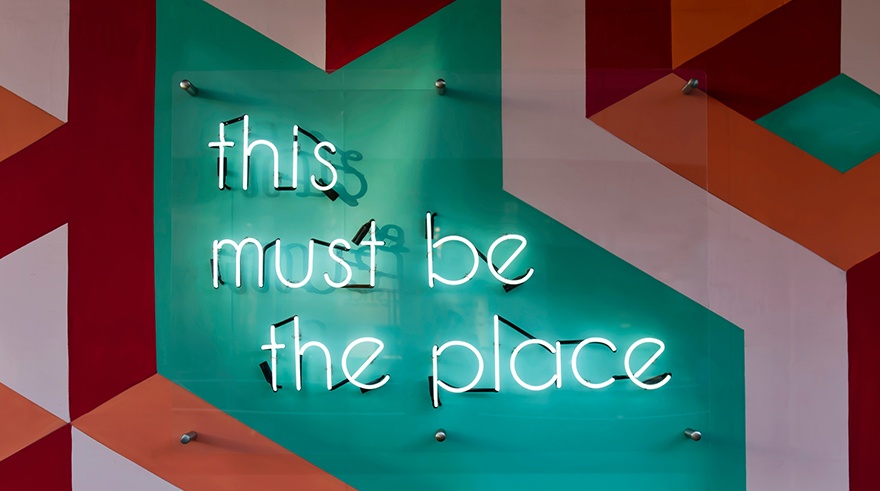Different offices have different needs and challenges, but one thing they all have in common is an office manager with the responsibility of assuring productivity and efficiency. Nowadays we know that these two outcomes are strictly related to how well people feel at their workplaces, and to how well offices are prepared and equipped to support individual and team work.
For years, principles of lean management have been encouraging managers to exert a tighter control over office spaces and the people within it, and simultaneously design-led human-centered approaches – like biophilic design - have been emerging and promoting the value of offices that are enriched particularly by plants and nature-inspired art, as well as other home-like comfort details.
So, in order to realize which was the better approach amongst all, when it comes to office space management, many studies where the different hypothesis were tested took place over the last decade.

One of these studies “The Relative Merits of Lean, Enriched, and Empowered Offices: An Experimental Examination of the Impact of Workspace Management Strategies on Well-Being and Productivity” was based in two experiments which results publish in 2010 by Knight, Craig, Haslam, and S. Alexander in the Journal of Experimental Psychology revealed the increasingly growing importance of office design and employee empowerment.
The experiments examined the impact of space management strategies in which the office was either (a) lean, (b) decorated by the experimenter (with plants and art), (c) self-decorated, or (d) self-decorated and then redecorated by the experimenter. Then the impact of these conditions on organizational identification, well-being, and various forms of productivity (attention to detail, information processing, information management, and organizational citizenship) was measured, and superior outcomes were observed when offices were decorated rather than lean. However, further improvements in well-being and productivity are observed when workers have input into office decoration. In both experiments, well-being and productivity were enhanced by enriching a space and then further enhanced by empowering participants within the same working environment.
Although it was clear that Office design and employee empowerment both have an important role to play in determining people’s responses to their work environment, further implications for theory and practice were raised by these results. In particular, findings that pointed to the need to question assumptions about the merits of lean office space management that had been dominant throughout the last century.
Efficient Workspace Management: Is Lean mean?
Lean is excellent for workspace and flow organization, reducing wastes of time, materials and efforts, eliminating uncertainties and bad conducts or mistaken practices, but it is not enough by itself to assure productivity and well-being.
On the basis of the latest research, a new perspective is rising, and experts argue that all of these office management approaches when applied separately may compromise organizational outcomes by disempowering workers or failing to give them input into the design of their office space.
Office Managers should practice a lean management strategy, but this does not mean they should stick only to the “old” Lean Principles that addressed the three objectives originated by the Toyota Production System: eliminating overburden, inconsistency, and waste. The “new” Lean addresses each of these objectives, through the two pillars of Lean: respect for people and continuous improvement.
Respect for people means that office managers should operate under the idea that people want to do their best work, respecting people by allowing them to focus, giving them the autonomy to make decisions, and by not overburdening them. By giving people this respect, we enable them to do their best work — and give them the ability to deliver the most value to the business and to its customers.
Ultimately design-led human-centered office management approaches were all originated in this lean pillar of respect for the people, and are evolving way beyond basic lean thinking and shaping the latest workplace design trends.

Managing for Lean, Comfortable and Truly Efficient Offices
So, how can an office manager assure productivity and employee well-being? Implementing strategies that will help him/her:
- Maintain order and efficiency continuously – reap the benefits of an organized and visual workplace.
- Empower employees to make decisions and gather their inputs about everything that goes on in the office - bring up potential problems that would hinder a successful rollout.
- Make sure there is a space for every type of work – hybrid offices where each space focus on a particular purpose or function and where teams or individuals can meet the most suitable conditions for each type of work are the ideal offices of tomorrow!
- Assure your management strategies are genuine and true to company values and culture - consider your culture and the profile of your workforce when you’re choosing anything for the office from work tools and apps to furniture or recreational items.
- Take on employee well-being as part of the office design – biophilic, “resimmercial”, green and sustainable design… bringing natural and home-like elements into the workplace while keeping it as “green” as possible. Research has shown that individuals who work in green-certified buildings experience better sleep quality and higher cognitive testing scores. Nature-inspired — or “biophilic” — workplace design was also proven to help workers to feel physically and mentally well, and ultimately more productive. Plants, more natural light and design elements made from natural materials increase employee’s well-being and consequently also help boosting creativity, productivity and focus.

Many businesses today are redesigning their office to provide some relief from stress and support for healthy living, under the WELL Building Standard certification, which takes lighting, air quality, comfort and other wellness factors into account. Because when employees are comfortable, healthy, and feel empowered in an enriched work environment they feel happy and truly motivated, ready to take on the world, and that is the definite secret for productivity!


.png)